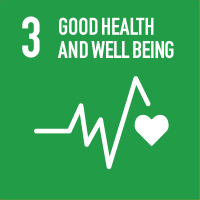Studying at the University of Verona
Here you can find information on the organisational aspects of the Programme, lecture timetables, learning activities and useful contact details for your time at the University, from enrolment to graduation.
Study Plan
This information is intended exclusively for students already enrolled in this course.If you are a new student interested in enrolling, you can find information about the course of study on the course page:
Laurea magistrale in Molecular and Medical Biotechnology - Enrollment from 2025/2026The Study Plan includes all modules, teaching and learning activities that each student will need to undertake during their time at the University.
Please select your Study Plan based on your enrollment year.
1° Year
| Modules | Credits | TAF | SSD |
|---|
1 course among the following1 course among the following2 courses among the following3 courses among the following2° Year activated in the A.Y. 2024/2025
| Modules | Credits | TAF | SSD |
|---|
| Modules | Credits | TAF | SSD |
|---|
1 course among the following1 course among the following2 courses among the following3 courses among the following| Modules | Credits | TAF | SSD |
|---|
| Modules | Credits | TAF | SSD |
|---|
2 courses among the following ("CLINICAL PROTEOMICS" 1ST and2ND YEAR; the other courses 2nd year only)Legend | Type of training activity (TTA)
TAF (Type of Educational Activity) All courses and activities are classified into different types of educational activities, indicated by a letter.
Clinical proteomics (2023/2024)
Teaching code
4S003688
Credits
6
Language
English
Scientific Disciplinary Sector (SSD)
CHIM/01 - ANALYTICAL CHEMISTRY
Courses Single
Authorized
The teaching is organized as follows:
Clinical proteomics
laboratorio
Learning objectives
Module: theory The aim of clinical proteomics is to detect molecular markers useful in the clinical setting. In particular, the purpose of clinical proteomics is to identify dysregulated pathways and protein biomarkers that can be useful for diagnosis, prognosis, and prediction of therapeutic outcomes, as well as to clarify pathogenic mechanisms. Upon completing this course, students will have the necessary knowledge to recognize strengthens and weakness of the different proteomics methodologies, as well as to recognise their application to current areas of clinical investigation. Module: laboratory The student will acquire laboratory skills through a series of experiments concerning the proteomic analysis of biological samples by two-dimensional electrophoresis.
Prerequisites and basic notions
Being a first year, first semester exam, there are no specific prerequisites other than those required for access to the degree course.
Program
MM: Theory
• Introduction to clinical proteomics
• Strategies for protein sample preparation
• Gel-based and gel-free clinical proteomics analyses
• Protein Identification by Tandem Mass Spectrometry
• Label-Based and Label-free MS clinical proteomic approaches
• Differential profiling of Breast Cancer plasma proteome for biomarkers identification
• Clinical Proteomics to study Pancreatic Cancer Stem Cells
• Brain tissue proteomic analysis to identify biomarkers of Alzheimer’s Disease
• Evaluation of therapeutic effects of neural stem cells therapy in Parkinson’s disease
• Proteomics of cerebrospinal fluid to identify biomarkers for amyotrophic lateral sclerosis
• Pharmacoproteomics for elucidating the mechanism of action of anticancer drugs
MM: Laboratory
The student will participate to practical experiences which are typical analyzes of a clinical proteomics laboratory, such as: preparation of a protein extract for proteomic analysis, separation by isoelectric-focusing of proteins, separation by two-dimensional electrophoresis of protein extracts, staining and evaluation of proteomic profiles.
Bibliography
Didactic methods
Frontal teaching as the main teaching method.
In special cases, indicated by University guidelines, and by the request of individual students, recorded lessons may be made available.
Learning assessment procedures
The aim of the exam is to verifying the level of achievement of the learning outcomes which are above indicated.
The exam consists of a written test of 2 hours that covers all the topics of the program. The examination method is NOT differentiated between attending and non-attending students and/or for Erasmus students and the course does NOT include intermediate exams.
The assessment test is semi-structured as a questionnaire with open answers. The students will have to answer to different open questions, demonstrating that they understand, and are able to use, the basic concepts of each topic. Understanding of practical experiences will be verified through questions which are included in the exam.
Evaluation criteria
The ability to discursively organize knowledge is evaluated, as well as the deepening of knowledge, the ability to critically analyze and evaluate the studied topics, the quality of the exposition, and the competence in the use of the specialized vocabulary.
Mark, expressed in thirtieths (max 30/30).
Criteria for the composition of the final grade
The final mark is obtained from the following formula: Mark = Mark_written exam
Exam language
italiano/inglese

